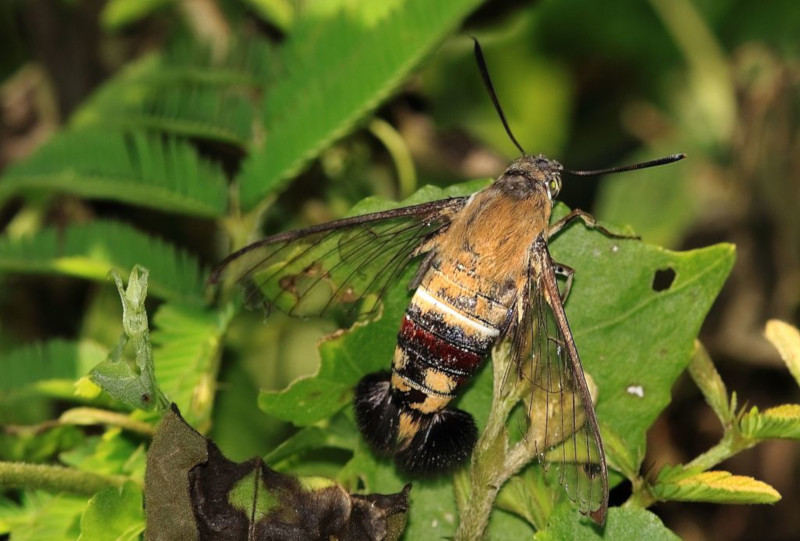Pellucid Hawkmoth Facts
- The unique term of Pellucid Hawkmoth serves as the most frequently used common name for this moth. The marvel of Nature also goes by several alternates, however. These include the terms of the coffee clearwing and the coffee bee hawkmoth.
- Scientists, meanwhile, know it by quite a different term, as is the norm. Their name for it, though, isn’t nearly as simple to pronounce as the others that it goes by. That’s because it’s the somewhat hard to pronounce term of Cephonodes hylas.
- It actually shares its place in the annals of science with many others species, due to who recognized it. The Swedish zoologist and botanist Carl Linnaeus made the first official recognition of it as a separate and distinct species. This he did in the year 1771.
- For the moment, at least, the Pellucid Hawkmoth appears to b maintaining a sizeable and stable population base. This further appears to be true throughout the entirety of its range. The IUCN, therefore, presently has no listing for it.
- The beautiful Lepidoptera nonetheless faces the same potential threats as many other species around the world. Habitat loss naturally poses a possible danger. Its greatest threat, however, obviously comes in the form of the ongoing effects of climate change.
Related Articles
Pellucid Hawk Moth Physical Description
Cephonodes hylas can possess a wingspan of up to 3 in (7.5 cm). Most interestingly, the wings are transparent and reflect most light (creating antireflection) which makes the species difficult to see. That is their most distinctive feature.
The wings are an unusual triangular shape and wispy thin. They commonly possess black edging, as well as thin black veins throughout them.
The caterpillar is a beautiful bright green. In adult individuals, the thorax is habitually also bright green. The legs and face are usually a light gray in color, and head and spiracles – mostly dark blue.
Broad bands of yellow and red with a dark edging cross the body of the insect, which is stout in shape and reminds of the body of the bumblebee. The abdomen is somewhat tapered in shape and can be yellow, green, or orange.
In short, this is a beautiful moth worth spotting.
Pellucid Hawkmoth Distribution, Habitat, and Ecology
The Pellucid Hawk Moth, Cephonodes hylas, or Coffee clearwing, is a moderately large species of moth. It is also a beautiful cross between a cicada, a moth, and a glass winged butterfly.
The insect has a rather wide distribution and lives primarily in areas of India, Japan, Africa, Sri Lanka, Southeast Asia, Australia, Madagascar, and Seychelles.
They inhabit a variety of habitats, and provided the temperatures are warm enough and the right types of vegetation are present, they seem to thrive.
The Cephonodes hylas feed primarily upon the leaves of the coffee plant and pomegranate – good diet.
The Pellucid Hawkmoth is a diurnal insect and does not much respond to light. Also, they also make a deep humming sound when under stress.
Check out our other articles on Elephant Hawkmoth, Rosy Maple Moth, Southern Flannel Moth, Plume Moth, Regal Moth, Venezuelan Poodle Moth

